Queen Elizabeth’s Death Heralds End of a Remarkable, History-Making Reign
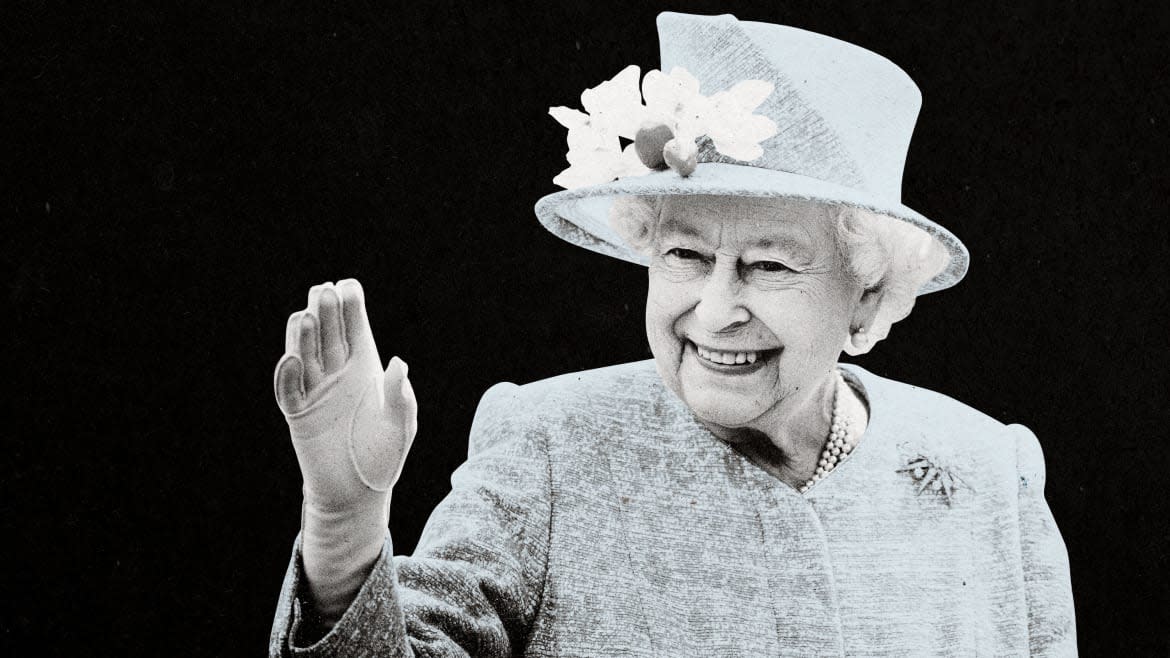
- Oops!Something went wrong.Please try again later.
- Oops!Something went wrong.Please try again later.
- Oops!Something went wrong.Please try again later.
On her 21st birthday, Princess Elizabeth promised her people that “my whole life, whether it be long or short, shall be devoted to your service.” After a truly remarkable reign of over 70 years, the longest in history by a British monarch, Queen Elizabeth’s duty is finally done.
On September 8, the queen died, at age 96, after a series of canceled events Buckingham Palace put down to her suffering mobility problems, but which clearly telegraphed her fading health. While she appointed Liz Truss as Britain’s new prime minister on September 6, she was forced to pull out of a virtual meeting of the Privy Council the next day.
Earlier in the day, it was announced the queen was under medical supervision at Balmoral, her Scottish summer holiday retreat, after doctors had become concerned for her health. Members of the royal family rushed to be with her. The announcement was made by Buckingham Palace at 6.30pm local time: “The Queen died peacefully at Balmoral this afternoon. The King and The Queen Consort will remain at Balmoral this evening and will return to London tomorrow.”
The Queen died peacefully at Balmoral this afternoon.
The King and The Queen Consort will remain at Balmoral this evening and will return to London tomorrow. pic.twitter.com/VfxpXro22W— The Royal Family (@RoyalFamily) September 8, 2022
Royal Family Rushes to Queen’s Bedside as Condition Worsens
A positive diagnosis for COVID in February had first caused concern. The palace announced she was receiving medical attention, and intended to return to light duties. A new pattern was established with the announcement of her mobility problems: the queen’s appearance at events was decided on an on-the-day basis.
In her Platinum Jubilee year, while the queen missed the State Opening of Parliament, the Platinum Jubilee Concert, and commemorative Derby, she delighted crowds by appearing on the Buckingham Palace balcony at the culmination of the celebrations on June 5, saying afterwards she had been “humbled and deeply touched that so many people have taken to the streets to celebrate my platinum jubilee. While I may not have attended every event in person, my heart has been with you all; and I remain committed to serving you to the best of my ability, supported by my family.”
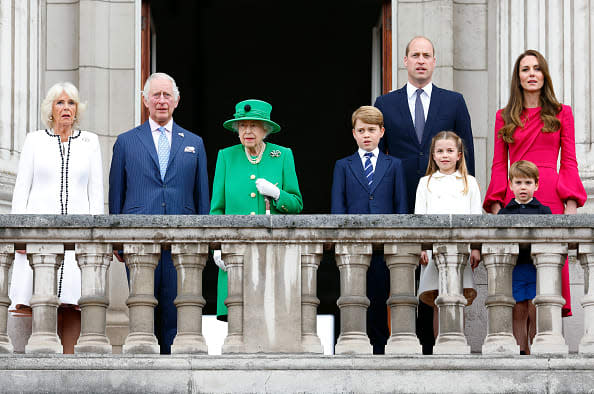
Camilla, Duchess of Cornwall, Prince Charles, Prince of Wales, Queen Elizabeth II, Prince George of Cambridge, Prince William, Duke of Cambridge, Princess Charlotte of Cambridge, Prince Louis of Cambridge and Catherine, Duchess of Cambridge stand on the balcony of Buckingham Palace following the Platinum Pageant on June 5, 2022 in London, England.
The queen was last seen in public on July 21 at Aberdeen airport, en route to beginning her vacation at her Scottish country retreat, Balmoral. In early September she canceled her appearance at the Braemar Gathering Highland Games—a longtime royal summer fixture, which she was patron of—and for the first time the queen appointed Britain’s next prime minister at Balmoral rather than Buckingham Palace on September 6. A photograph was taken to mark the occasion; the queen smiling but looking frail as she appointed Truss to the role.
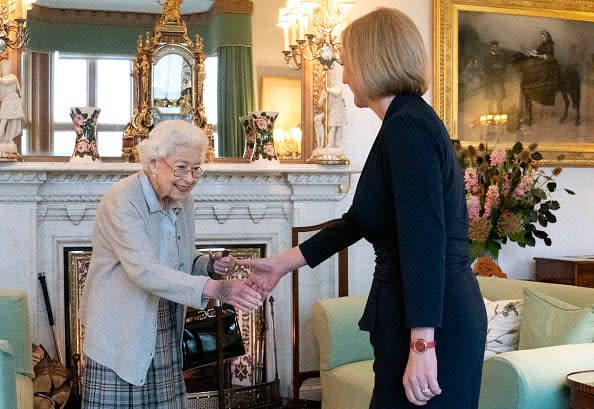
Queen Elizabeth greets newly elected leader of the Conservative party Liz Truss as she arrives at Balmoral Castle for an audience where she will be invited to become Prime Minister and form a new government on September 6, 2022 in Aberdeen, Scotland.
The great fact in the remarkable story of Queen Elizabeth II, and her long, glorious and record reign—which encompassed 14 prime ministers, the end of the British Empire, and an extraordinary rejuvenation of the British monarchy—is that at her birth no one ever expected her to be queen.
Until the age of 12, she was merely the eldest daughter of the Duke of York—a position analogous to that of Princess Beatrice today—but following the abdication crisis in 1936 that led to her uncle Edward VIII giving up the throne over his relationship with a divorcée, Wallis Simpson, her father became George VI, and, at the age of 10, Elizabeth suddenly became heir apparent to the throne.
The new royal family—including her sister, Princess Margaret, who was four years younger than “Lilibet” and to whom she was devoted—moved immediately into Buckingham Palace, which she had known up until then only as the home of her grandfather George V, whom she called “Grandpa England.”
She did not attend school but was privately educated at home, with Margaret, by her Scottish governess Marion Crawford, known as Crawfie. The provost of Eton College, Henry Marten, instructed her in constitutional history and, as was common for upper-class girls of her generation, Elizabeth spoke French fluently, learning from a succession of under-governesses who were native speakers.
Princess Elizabeth had met her second cousin-once-removed, Philip of Greece, several times, but in 1939, when he was 18 and she was just 13, he came to visit her father the king and she fell in love with him.
Crawfie described how, while they were playing with a clockwork railway in the day nursery, Philip came into the room. “For a while they knelt side by side playing with the trains. He soon got bored with that. We had ginger crackers and lemonade in which he joined and then he said, ‘Let’s go to the tennis courts and have some real fun jumping over the nets!’ At the tennis courts, I thought he showed off a little too much. Lilibet said, ‘How good he is! How high he can jump!’ He spent a lot of time teasing plump little Margaret.”
Later that evening, when Philip went for dinner with the king, Elizabeth had already been sent to bed, in accordance with the nursery schedule.
Elizabeth spent the war years living at Windsor Castle, which was safer than central London, and where she developed a tremendous admiration for Queen Victoria, whose principal home the castle was. She could never have imagined then that she would end up ruling for longer than her great heroine.
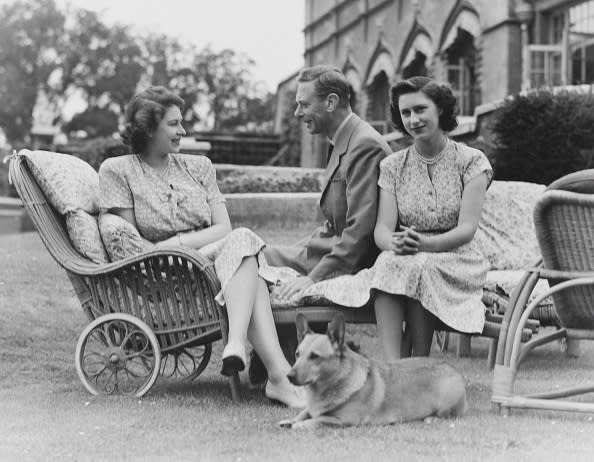
"King George VI (1895 - 1952) with his daughters Princess Elizabeth and Princess Margaret (1930 - 2002) in the grounds of the Royal Lodge in Windsor, England on July 08, 1946.
Life at Windsor during the war was suitably austere. Pictures were issued of the identically dressed princesses wielding rakes while haymaking on Home Farm in Windsor Park, and of their father prodding a pig in the farm pen, setting an example for an embattled nation that was being encouraged to “Dig for Victory” by growing its own food. At Windsor, as at Buckingham Palace, lines were painted around the baths, so that only five inches of water would be drawn.
The queen carried her war-baby frugality into her later life. Breakfast cereals at her palaces were put on the table in Tupperware boxes to keep them fresh, wrapping paper was recycled, and meals often comprised leftovers. She and Philip were said to deplore Prince Charles’ extravagance.
Elizabeth trained as an ambulance driver and auxiliary mechanic during the war and was proud, in later years, of her ability not only to drive herself around but to fix minor mechanical problems on the Land Rovers at Balmoral, her country estate in Scotland.
In 1944, for her 18th birthday, her father gave her a dog, a corgi named Susan, who inspired her lifelong love of Corgis and Dorgis (a crossbreed created accidentally after one of her Corgis mated with one of Margaret’s Daschunds). Susan was the progenitor of a long line of royal Corgis. Susan died in 1959, and a gravestone was erected at Sandringham, reading, “For almost 15 years, the faithful companion of the Queen.”
The Corgis had a starring role in the James Bond mini-movie that launched the London Olympic Games in 2012, and each dog had an individually designed menu, including an array of homeopathic and herbal remedies. Their food was either served to them by a butler in an eclectic collection of battered silver and porcelain dishes, or by Elizabeth herself, who would feed them one by one, in order of seniority.
In 2009, the Queen stopped breeding Corgis. Aware that her love for the dogs was not shared by her family, she was said to be concerned about where they would live after her death, but continued to acquire pet dogs.
Victory in the war against Nazi Germany provided one of the few opportunities for the future queen to join her people shoulder to shoulder. On VE-Day, May 8, 1945, Elizabeth and Margaret joined the cheering crowds outside the palace incognito, chanting: “We want the king! We want the king!” The events were dramatized in the movie A Royal Night Out.
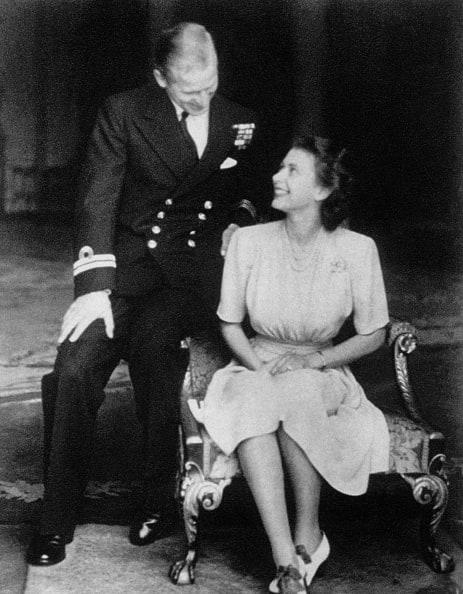
Prince Philip and the queen when younger.
One year after the end of the war, and seven years after their nursery flirtation, in 1946, Elizabeth asked Philip to Balmoral, where he proposed to the young princess; the wedding was delayed for a year—until she turned 21.
Opposition to Philip as a groom, an impoverished Greek “princeling” as he called himself, whose family had been dethroned and exiled from Greece when he was an infant, was widespread.
The then-queen referred to him privately as “the Hun,” and her secretary wrote in his diary,“Lords Salisbury, Eldon and Stanley think him no gentleman, and in a sense they are right.”
Hostility to Philip extended even to the gamekeeper, who mentioned Philip’s “rather erratic shooting,” but the couple were wed, nonetheless, in 1947.
The Duke of Edinburgh was famously furious that the queen and her children kept the last name Windsor and complained to friends: “I am the only man in the country not allowed to give his name to his children. I’m nothing but a bloody amoeba.”
Elizabeth’s life was transformed again on Feb. 6, 1952, when her father, a heavy smoker, died after contracting lung cancer. He had been secretive about his condition and his death came as a huge shock. Elizabeth and Philip were overseas on a royal tour at the time, and had to be urgently recalled home.
It was an inauspicious beginning to an extraordinary reign.
Fourteen different prime ministers served Queen Elizabeth in the course of her long reign, the first being Winston Churchill and the last being Boris Johnson. Every Wednesday, they met her for a private audience at Buckingham Palace. These meetings were the inspiration for Peter Morgan’s play The Audience, which evolved into the Netflix series The Crown.
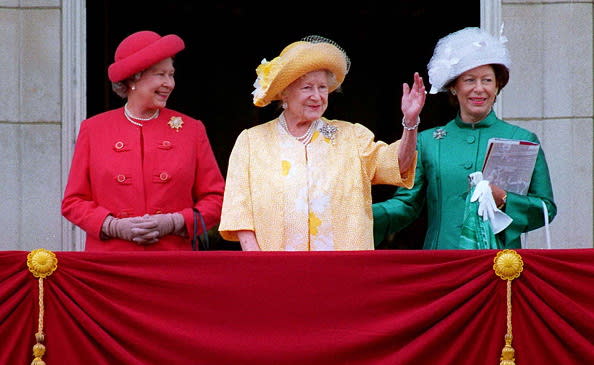
Queen, Queen Mother And Princess Margaret on balcony at Buckingham Palace.
Her first great crisis came over her sister Margaret’s relationship with her father’s former equerry, Peter Townsend, who was divorced.
Margaret’s travails made up a significant part of the first series of The Crown, but its portrayal of the queen’s role in those events was not entirely accurate; the idea that Margaret was ultimately forbidden from marrying Townsend by her sister, who had herself been misled by her political advisers, is not correct. In fact, as public records in the National Archives show, Prime Minister Anthony Eden drafted a parliamentary proposal to amend the Royal Marriage Act, which would have allowed Princess Margaret to keep her royal title and public funding, although she would have had to renounce her rights of succession and those of any children.
Eden, in a letter to the Commonwealth prime ministers, wrote: “Her Majesty would not wish to stand in the way of her sister’s happiness.” There was every reason to believe that the amendment would have been approved, but on Oct. 31, 1955, Margaret dramatically announced that she would not be marrying Townsend after all.
Margaret subsequently married the photographer Antony Armstrong-Jones, who was created the first Earl of Snowdon on his marriage.
Of course, it would be naïve to expect a dramatic portrayal of the monarchy to be entirely accurate: As Peter Morgan, who never met Elizabeth, told a panel at the Television Critics Association: “I want my independence, they want theirs. I don’t want to be associated with the palace.” He added, however, that a series “dealing with this subject with respect is a rare thing. These are people who are not used to being taken seriously.”
Morgan, when asked if the queen would like The Crown, replied, “Who knows? These are the most written-about, satirized, portrait-painted people in the world. What do they care?”
The Crown, is, despite (or perhaps because of) its latitude with the narrative, generally recognized as the best and most compellingly intimate portrait of Elizabeth ever created on screen.
Undoubtedly part of the fascination with Morgan’s Elizabeth is the fact that despite a multitude of documentaries throughout her reign, beginning with the 1969 “Royal Family” documentary, few of those films ever gave a very satisfying or full portrait of her. One BBC documentary was famously manipulated in the editing room to make it appear Elizabeth had flounced out of a shoot with Annie Leibovitz, when no such thing ever happened.
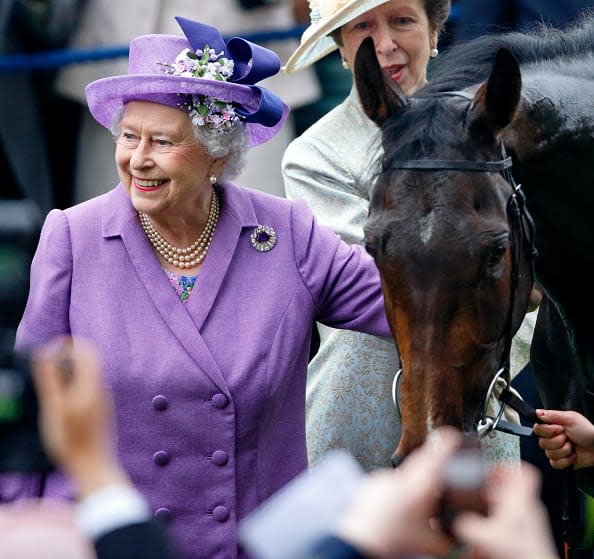
Queen Elizabeth II pats her horse 'Estimate' after it won the Ascot Gold Cup on day 3 'Ladies Day' of Royal Ascot at Ascot Racecourse on June 20, 2013 in Ascot, England.
It is ironic that it was a fictionalized TV series, merely “based on true events,” that finally captured the character of Elizabeth, who, Morgan has said, “would have much preferred the life of a solid English countrywoman, living with her dogs and breeding horses.”
Her first child, Charles, was born in November 1948, followed by Anne in 1950. A 10-year gap then ensued before the birth of their third child, Andrew; author Sally Bedell Smith suggested in her book Elizabeth, The Queen that the 10-year age gap between Anne and Andrew was the result of “Philip’s anger over the queen’s rejection of his family name.”
A compromise was finally reached in which any descendants not entitled to the HRH designation of “royal highness” would be called Mountbatten-Windsor.
Their fourth child, Edward, was born in 1964.
In the domestic sphere, Philip ruled the family, and did so with a firm hand. He was rumored to have had several affairs, but the queen remained completely and utterly in love with him for her whole life.
“My husband has quite simply been my strength and stay all these years, and I owe him a debt greater than he would ever claim,” she said, speaking about Prince Philip during a speech to mark their golden wedding anniversary in 1997.
The queen was not a warm mother by today’s standards. In his authorized biography by Jonathan Dimbleby, Prince of Wales: A Biography, Charles complained at great length about his lonely upbringing, and characterized his mother as distant and his father as overbearing.
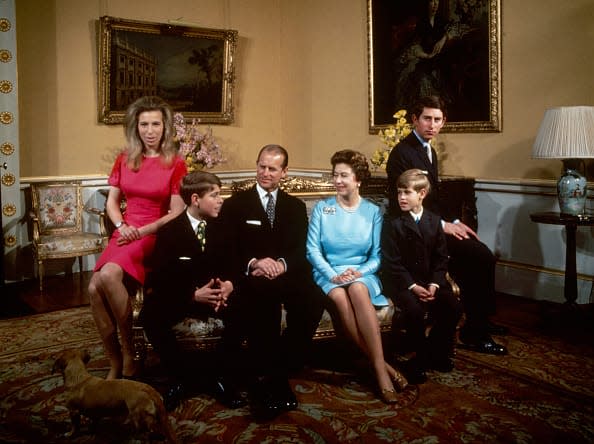
The royal family at Buckingham Palace, London, 1972. Left to right: Princess Anne, Prince Andrew, Prince Philip, Queen Elizabeth, Prince Edward and Prince Charles.
He bitterly recalled a childhood during which the nursery staff, not his “emotionally reserved” parents, were the people who “taught him to play, witnessed his first steps, punished and rewarded him, helped him put his first thoughts into words.”
The queen’s cousin and close friend Margaret Rhodes, who died in 2016, countered on Her Majesty’s behalf, saying: “They are not arms out and cuddly people, really. They are not lovey-dovey… The thing is, they’ve been brought up not to show publicly what they’re feeling…. She was much closer to the children than Charles gives her credit for. True, she didn’t run to the children and sweep them up as Princess Diana did, but they were different times.”
The queen herself once said of her family, “Like all the best families, we have our share of eccentricities, of impetuous and wayward youngsters and of family disagreements.”
She could certainly be an imperious figure even in private, however. Prince William said, in an interview to mark her diamond jubilee, “As I learned growing up, you don’t mess with your grandmother.”
The queen’s great passions were horses: It was when you talked horse gossip, one friend told The Daily Beast, that she really perked up. She read the Racing Post over breakfast every morning.
The queen was a keen rider; her first pony was a shaggy Shetland named Peggy, when she was 4, and even in her later years she was photographed riding a sturdy fell pony in Windsor Great Park, without a helmet, because, as she once said, a protective hat would “crush her hair.”
Elizabeth owned a fine stable of thoroughbreds, having inherited several on the death of her father in 1952 along with his racing colors: a purple and scarlet jacket with gold braiding and a black cap. Horses owned by the queen won more than 1,000 of the world’s most prestigious races, but she never scooped the Kentucky Derby. Her horse Dunfermline won both the Oaks and the St. Leger in her Silver Jubilee year, 1977. She never gambled.
The geopolitical background to the first decades of the queen’s reign was the decline and fall of the 500-year-old British Empire, a process that began in earnest after India was granted independence in 1947.
By the time the queen came to the throne, the tide was unstoppable, and the great wave of British decolonization that spread through Africa in the 1950s resulted in nearly every British territory being granted independence by the time of Harold Macmillan’s famous speech on the subject, known as the “Wind of Change,” which was the death knell of the empire, in 1960.
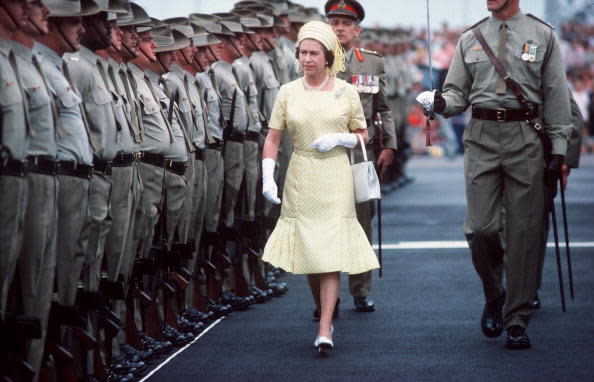
The Queen Reviewing Troops On Her Arrival In Brisbane, Australia, 1977
The queen sought to hang on to what she saw as the best aspects of the empire through the Commonwealth, a nebulous collection of 52 states, mostly former colonies, that form a loose association of nations. She remained the titular head of state of 16 independent countries, several of which, including Australia, are not expected to continue with King Charles III as their king and on their postage stamps and coins.
Elizabeth disclosed very little of her politics, however, as The Daily Beast revealed, she appeared to support Brexit and took to asking guests before the referendum to give her “three good reasons” why the U.K. should stay in the EU.
She was, essentially, a compassionate woman inspired by the fundamental tenets of Christianity, and she disliked political ruthlessness. Margaret Thatcher was regarded as “uncaring and socially divisive” by the queen, according to a celebrated 1986 leak. Former Spectator editor Charles Moore wrote in his official biography of Lady Thatcher that the queen expressed her dismay about the coverage to Thatcher, apparently telling the PM that she “could not imagine how the story came to be circulated, and anyway it bears no relation to the truth as I understand it.”
The queen always understood her political role was only advisory and symbolic, and never sought to have an impact on the political direction of the country. Her personal agenda was to provide stability, and to keep the show on the road.
As the queen’s children grew up, their activities became the defining issues of her reign.
Andrew was always her favorite, and in 1982 he was feted as a war hero when he returned from the Falklands conflict, where he flew helicopters in action, and greeted his mother with a red rose clasped between his teeth on the dockside.
That same year saw the most remarkable security breach in Royal history when an unarmed, slightly drunk, and shoeless Michael Fagan climbed through her bedroom window in 1982.
Reports at the time suggested the Queen calmly had a long conversation with Fagan to stall him while security was summoned, but Fagan himself told it differently: “She went past me and ran out of the room; her little bare feet running across the floor.”
The marriage of Prince Charles to Lady Diana Spencer in 1981 was a moment filled with promise for the royal family, and the world fell for the fairy tale beamed live around the world from St Paul’s.
But it was a sham. Charles was having a secret affair with Camilla Parker Bowles all along, and would later allege that he had been railroaded into the marriage with Diana by his father.
The marriage exploded in spectacular style in full public view.
Charles and Diana separated in 1992, the same year that the Daily Mail journalist Andrew Morton published his devastating account of the marriage, Diana, Her True Story.
Diana, it later emerged, never met him, but sent him lengthy tape recordings on which he based the book.
Andrew and his wife Sarah Ferguson also separated, as did Princess Anne and Mark Phillips. The great fire that destroyed much of the Queen’s beloved Windsor Castle in November capped an “annus horribilis,” as she referred to it in her annual Christmas message.
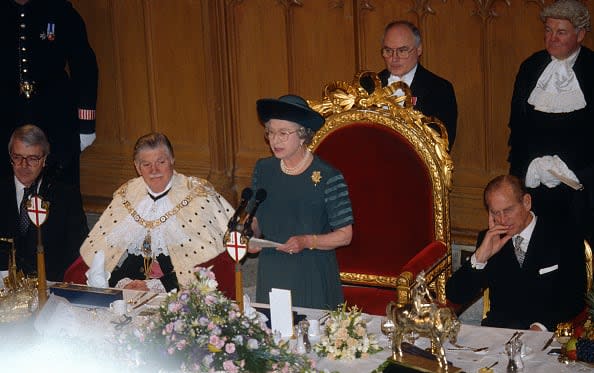
Queen Elizabeth ll delivers her “Annus Horribilis” speech at the Guildhall and describes her sadness at the events of the year including the marriage breakdown of her two sons and the devastating fire at her home Windsor Castle on November 24, 1992 in London, England.
But worse was to come.
In 1993, Charles was humiliated when a transcript of a 1989 phone call in which he joked about being Camilla’s tampon was published.
Diana spilled her secrets publicly in 1995, in a TV interview with Martin Bashir of BBC Panorama.
She opened up about everything: her bulimia, her multiple affairs, and, devastatingly, Charles’s infidelity; “There were three of us in this marriage, so it was a bit crowded,” she memorably stated in response to Bashir’s question of whether Camilla had been a factor in the breakdown of the relationship.
Diana’s interview was stuffed with astonishing, jaw-dropping revelations— she discussed her post-natal depression, her self-harming, her “rampant bulimia”—and it was a massive moment in the demystification of the royal family. The interview represented, perhaps for the first time in her reign, a complete loss of control by Elizabeth over the royal narrative.
She had always had a strained relationship with Diana—she was unsympathetic to her eating disorders (among the revelations that Diana told Bashir, she said that the royals considered bulimia “a waste of food”) and used to become irritated by her refusal to go outdoors at Balmoral when it was raining.
The queen had always had concerns about Charles’s suitability as king, believing his eccentricities and taste for the high life could endanger the durability of the Firm, as she called the family, and, despite the historical risks of divorce to the royals, she believed it was the only way to limit the unfolding disaster for the royal family that was Charles and Diana.
Charles and Diana divorced in 1996 and the royals swiftly cut Diana out of the family, stripping her of her HRH title.
But nothing could have prepared Her Majesty for the events following August 31, 1997, when Princess Diana was killed in a car crash in a Paris underpass.
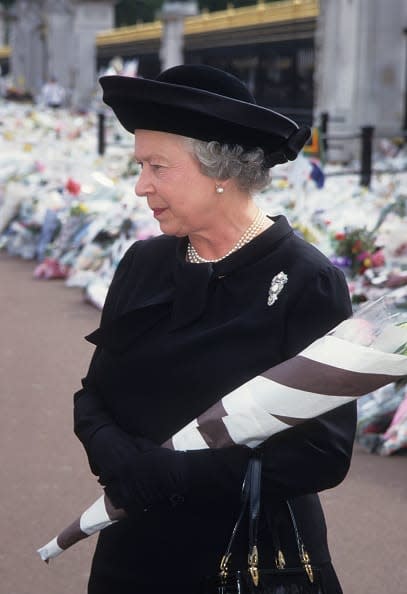
The funeral of Diana, Princess of Wales, 1997
Elizabeth was lambasted by the press for failing to publicly respond to Diana’s death, in marked comparison to Tony Blair, who paid masterful, televised tribute to the “People’s Princess.” In the end, the queen outdid herself with an unprecedented TV address in which she spoke to the nation “from my heart” as “your queen and as a grandmother,” which calmed public anger somewhat.
Diana’s death ushered in a new era of engagement for the royals. Spurred on by Blair—who had genuinely feared hostility over the ham-fisted reaction to Diana’s death could bring down the monarchy, an institution he revered—the queen sought to adopt a more accessible public image.
She did not have a particular love for America in her youth, and just five of her grand total of 256 overseas visits were to the country (in contrast to Canada, which she adored, and visited 24 times) but she was deeply affected by the horror of the Twin Towers terror attack in 2001. She gave special permission for “The Star-Spangled Banner” to be played at the changing of the guard, and moved many families of the 9/11 victims to tears when she told them “Grief is the price we pay for love.”
They are words often quoted at funeral and memorial services in the U.K., and will no doubt be recalled again this week in connection with Her Majesty’s own passing.
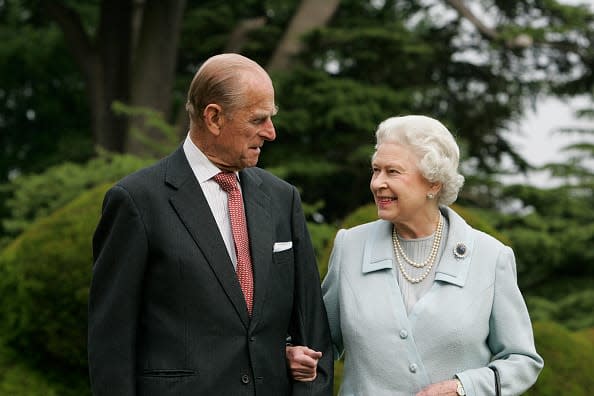
HM The Queen Elizabeth II and Prince Philip, 2007
The queen maintained a tremendous work rate, carrying out upward of 300 engagements per annum until the coronavirus pandemic struck which effectively curtailed pubic engagements.
“I have to be seen to be believed,” she once said, by way of explanation for her relentless schedule.
She made frequent use of a royal helicopter to hop between engagements, and quipped that “The chopper changed my life more than it did Anne Boleyn’s.”
The ultimate opportunity for the royals to modernize came when Prince William, then a student at St. Andrews University, fell in love with his housemate, Kate Middleton. The queen not only permitted the relationship with a “commoner” whose mother, Carole, was a former air hostess, she enthusiastically endorsed it, and turned a blind eye to the fact that William and Kate were living together at university before they were married.
She welcomed the Middletons into the family, made a firm friend of Carole, and set the course for a new era of monarchy.
She was frequently appalled by the fallout from her grandson Harry’s very public disasters, but she was hugely sympathetic, believing he was traumatized by his troubled childhood and in his younger years always forgave him.
The narrative of the final years of her reign was, however, dominated by the twin disasters of the downfall of Prince Andrew—the queen was criticized for moving too slowly to cut him out of the family's affairs, although she eventually did—and the collapse in the relationship between the royals and Harry and his wife, Meghan Markle.
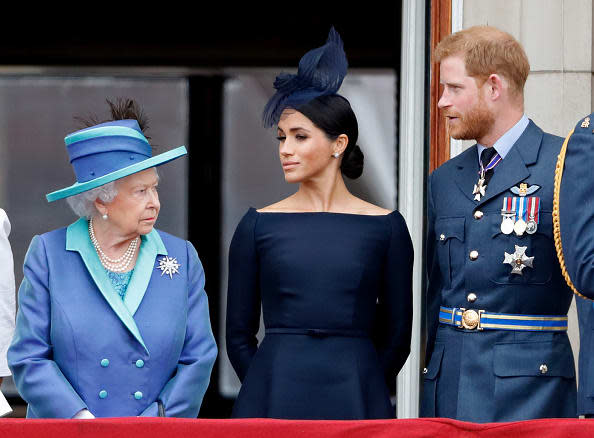
The couple blindsided the queen when, in January 2020, after months of behind the scenes discussions and negotiations, they published an announcement on the internet saying they planned to step back from the royal family, and wanted to become hybrid working royals, earning their own money and planned to divide their time between Britain and America.
The queen was furious. She showed her ruthless streak at the so-called “Sandringham Summit” a few weeks later, and told the couple there was no option for them to be half in and half out of The Firm. They were completely kicked out of the official side of the royal family. They were stripped of permission to use their HRH titles and Harry was stripped of his military titles and roles. They were even ordered not to use the word “royal” to brand themselves, leading to the demise of their once-popular Instagram page, SussexRoyal.
In 2021, Harry and Meghan took their revenge on the family, giving an extraordinary interview to Oprah Winfrey in which they accused an unnamed member of the family of racism. Harry hastily sought to clarify the offender wasn’t his grandmother or her husband. The queen, apparently not mollified, responded to the couple’s accusations with icy regal condescension: “Some recollections may vary,” was her verdict.
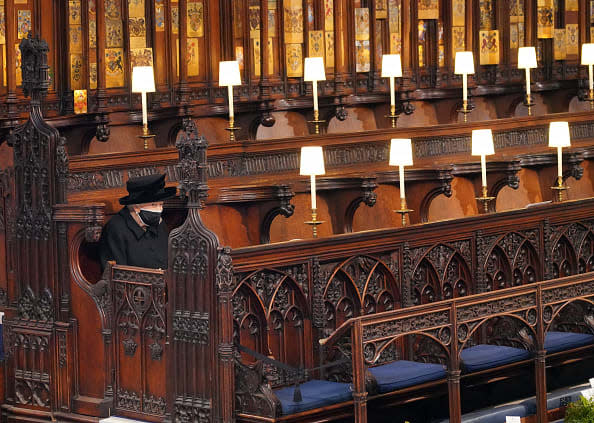
Queen Elizabeth II sits alone due to Coronavirus regulations at the funeral of Prince Philip, April 17, 2021
Just weeks after the Oprah interview had aired, Prince Philip, Her Majesty’s husband of 73 years, died. His funeral, on April 17, presented the first ceremonial challenge of the new era as the royals fretted about the possibility that Harry, no longer with a ceremonial role in the armed forces, would be the only male royal not in military uniform. The queen generously decreed that all men should simply wear dark suits, and the event passed off smoothly, although perhaps not quite so colorfully, as it might have.
One consolation for Her Majesty was that, owing to COVID, she and Philip got to spend almost all of the last year of his life together, hunkered down at Windsor Castle.
Harry and Meghan had always insisted their beef was with the institution of monarchy, not the queen herself, although many critics, pointing out that the queen was a very hands-on CEO, failed to see much difference. The couple came perilously close to coming into direct conflict with the queen when they claimed they had secured her support before giving their daughter her childhood nickname, Lilibet, as a first name. The queen’s representatives promptly briefed the BBC that she had no idea the name was going to be used.
Sadly, there was to be no grand reconciliation between the Sussexes and the rest of the royal family in her lifetime.
In October 2021, there was speculation about the state of the queen’s health after she cancelled an important trip to Northern Ireland at late notice, and spent a night in hospital. She subsequently cancelled a long standing engagement to appear at the Cop26 climate summit in Glasgow. She appeared on some Zoom calls—a message to the world she was still here, thank you very much.
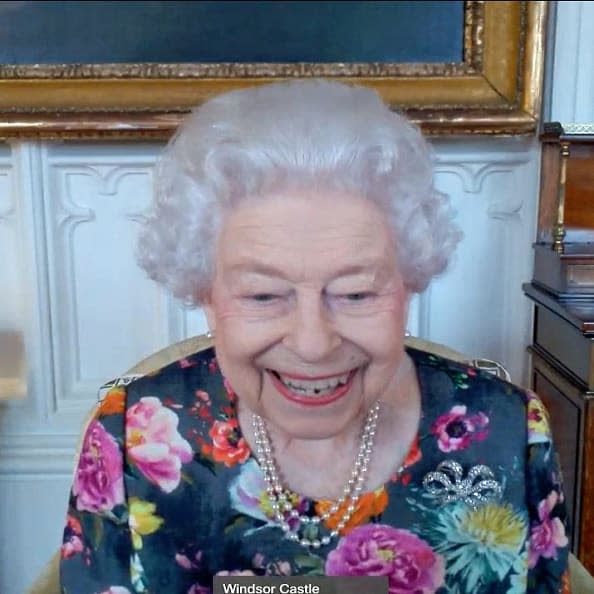
Queen Elizabeth II on Zoom, 2021
Then, after being ordered to rest by her doctors, the queen said she would attend the annual Remembrance Sunday service at Cenotaph. On the day, Buckingham Palace announced she had sprained her back, and would not attend. “Her Majesty is disappointed that she will miss the service,” the statement read.
Despite strict coronavirus prevention measures around the queen, on February 20, 2022 it was announced that the queen had been diagnosed with COVID.
Attention initially focused on her son Prince Charles whom she had been in contact with ten days earlier and had subsequently tested positive, but sources at the palace suggested she had actually contracted the disease from a team member.
Loath to show any signs of public weakness, the queen insisted she only had “mild cold like symptoms” and said she would continue working and undertaking “light duties.”
She was devoted to the job, to duty, to the end.
In her final, moving Christmas message, the queen said: “I often draw strength from meeting ordinary people doing extraordinary things: volunteers, carers, community organizers and good neighbors; unsung heroes whose quiet dedication makes them special. They are an inspiration to those who know them, and their lives frequently embody a truth expressed by Mother Teresa of Calcutta. She once said: ‘Not all of us can do great things. But we can do small things with great love.’”
The queen, in ways both big and small, did this, and aimed to do it. She saw her life as one of duty, and remained unwavering in that. She wanted the royal family to stand for the country, and for history, and tried to move it with the times, however innately conservative and private she was.
In the final year of her life, she still surprised and delighted in the public appearances she managed to do—particularly at her Platinum Jubilee, waving from the Buckingham Palace balcony—this after a color holographic image of her at her Coronation was projected onto the windows of the empty Gold State Coach as it was drawn by horses through the streets of London as part of a grand Jubilee pageant.
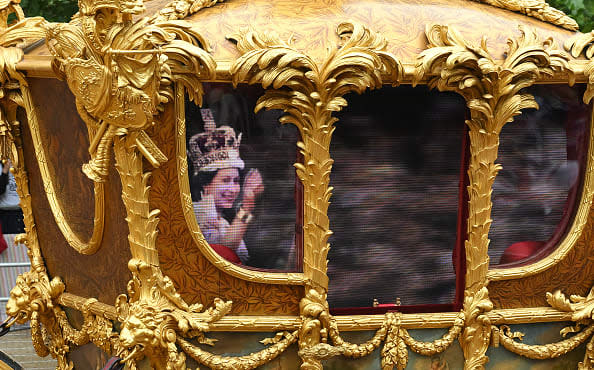
The original golden coronation carriage with a hologram of the Queen is seen during the Platinum Pageant on June 05, 2022 in London, England.
After her final balcony appearance, the queen released a statement: “When it comes to how to mark 70 years as your Queen, there is no guidebook to follow. It really is a first. But I have been humbled and deeply touched that so many people have taken to the streets to celebrate my platinum jubilee.
“While I may not have attended every event in person, my heart has been with you all; and I remain committed to serving you to the best of my ability, supported by my family.
“I have been inspired by the kindness, joy and kinship that has been so evident in recent days, and I hope this renewed sense of togetherness will be felt for many years to come. I thank you most sincerely for your good wishes and for the part you have all played in these happy celebrations.”
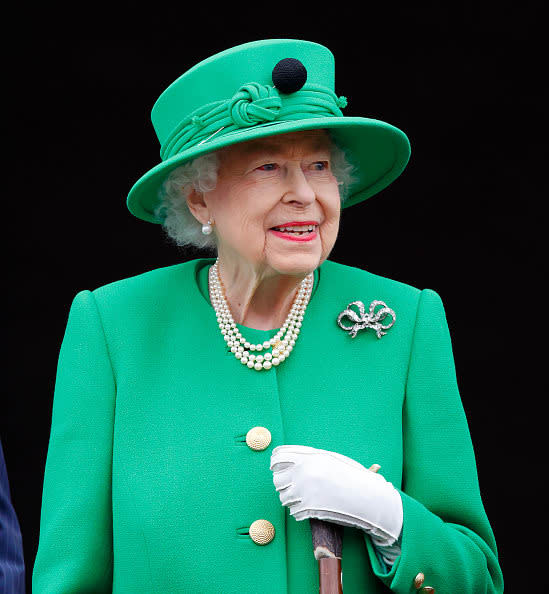
Queen Elizabeth II stands on the balcony of Buckingham Palace following the Platinum Pageant on June 5, 2022 in London, England.
Mobility problems, the palace repeated in the last months of her life, as to why the queen could not attend dates in her diary, or rearranging key ones like the appointment of Britain’s next prime minister which she did for the first time at Balmoral, her Scottish holiday retreat, rather than Buckingham Palace, in September 2022.
Her missteps—most obviously around the death of Princess Diana—were few. Her son and heir, who is expected to be known as King Charles III, now takes on the awesome responsibility of ruling, at what could easily become a time of great danger for the very existence of the monarchy, but he has a towering legacy to emulate and inspire him as he takes up the baton.
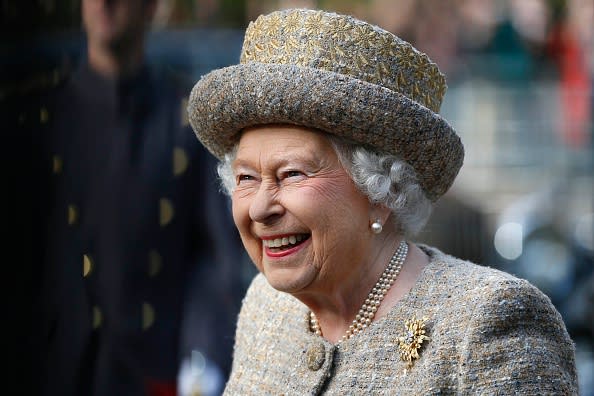
Queen Elizabeth II, 2014
Get the Daily Beast's biggest scoops and scandals delivered right to your inbox. Sign up now.
Stay informed and gain unlimited access to the Daily Beast's unmatched reporting. Subscribe now.

